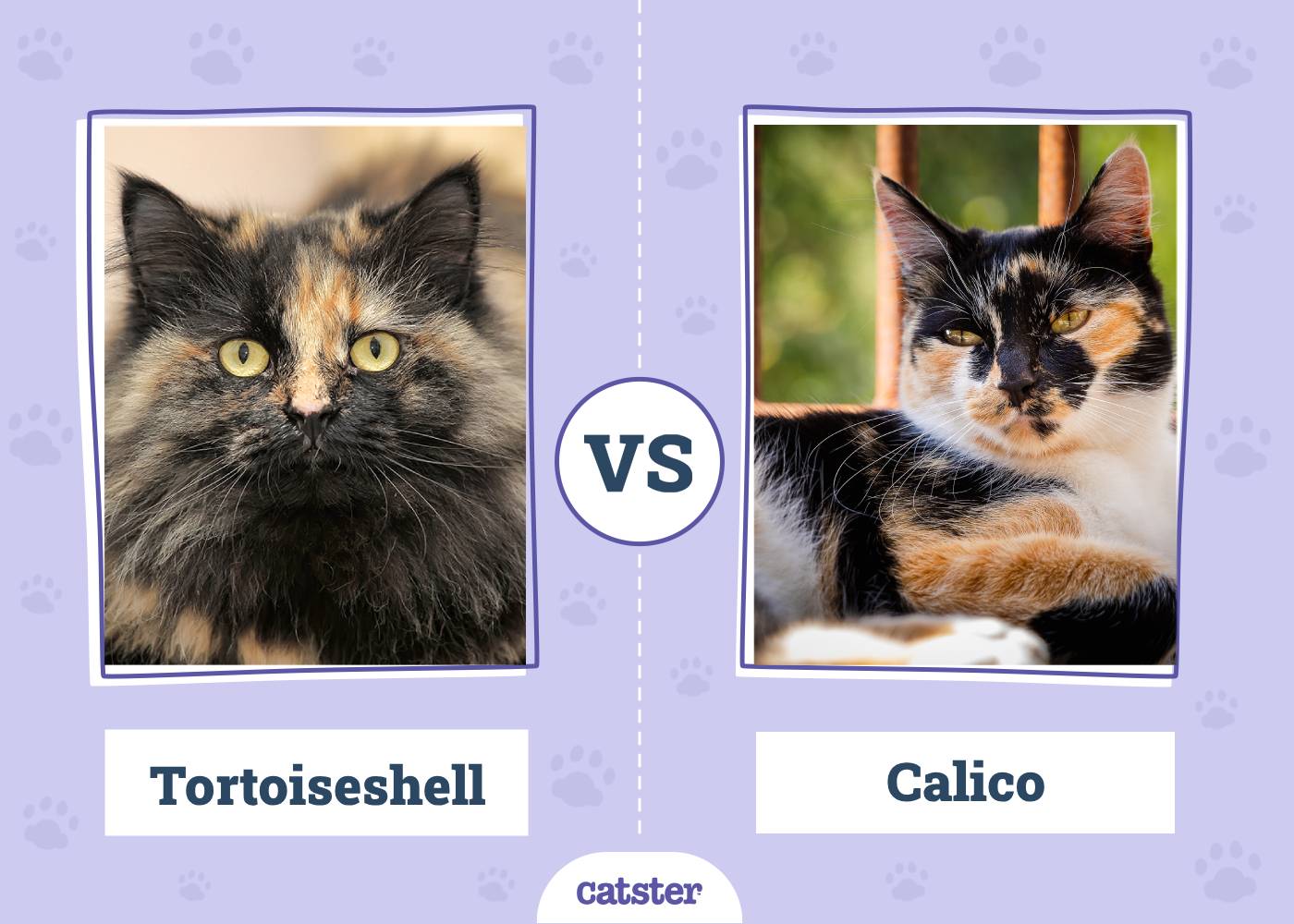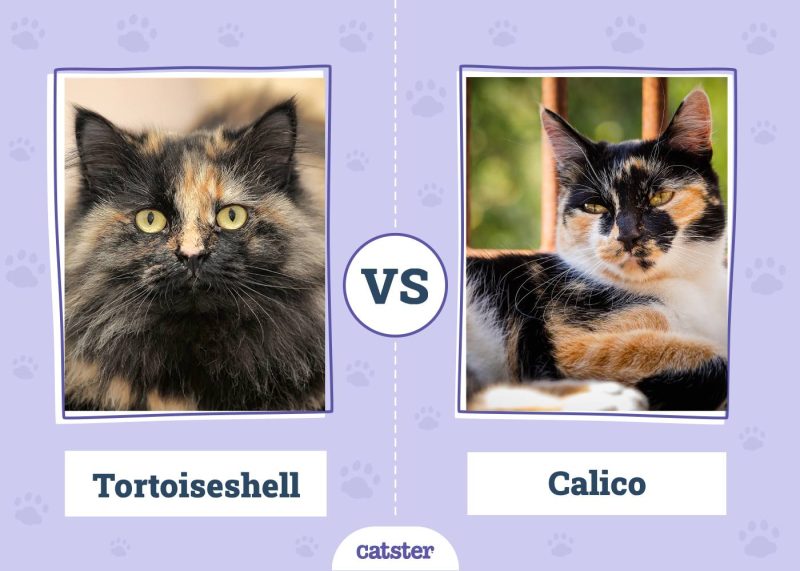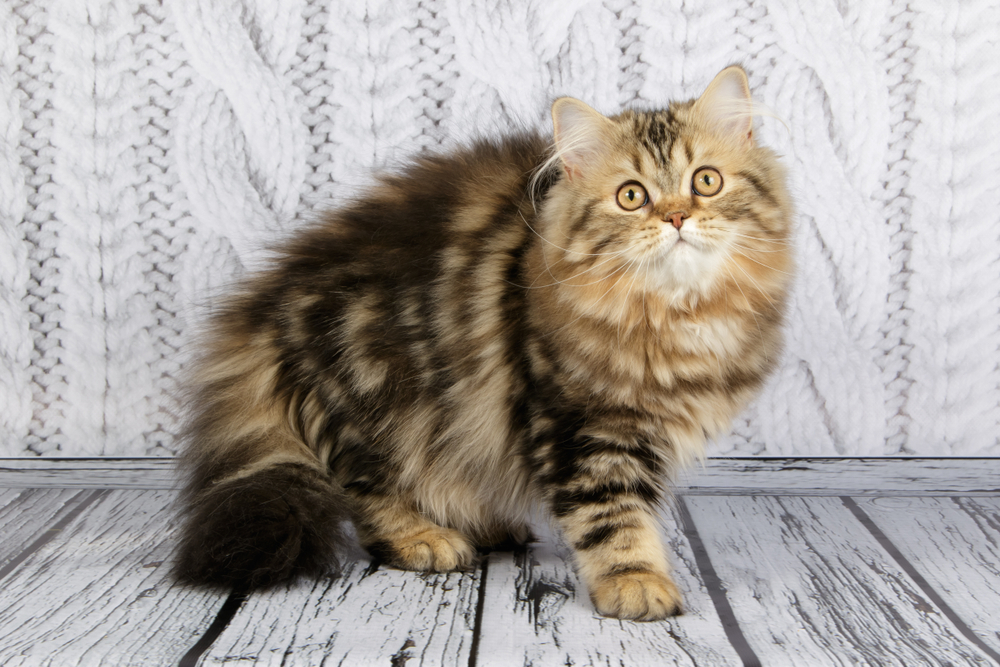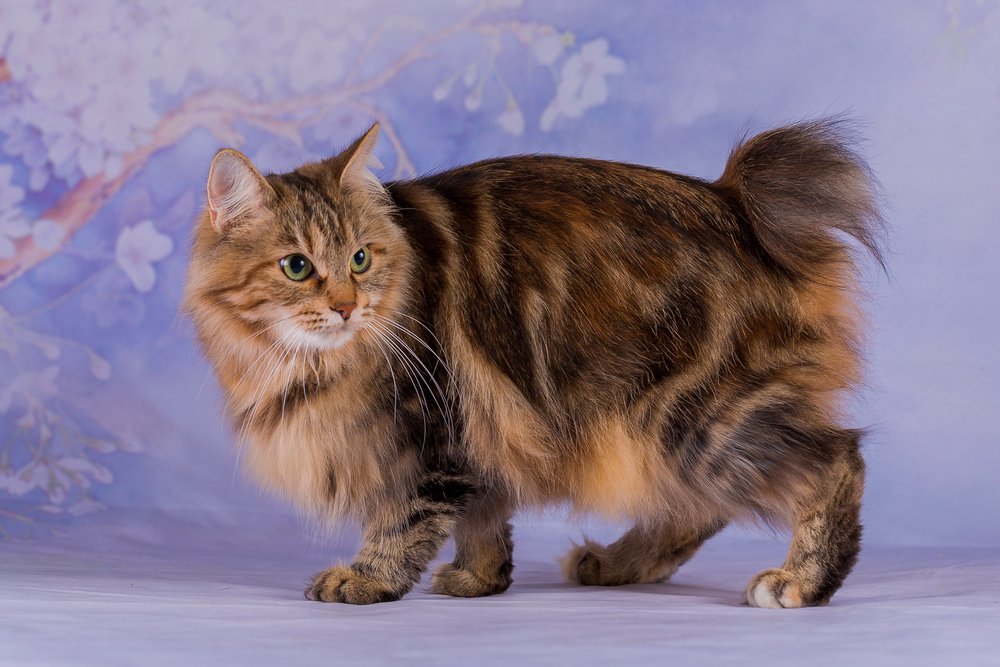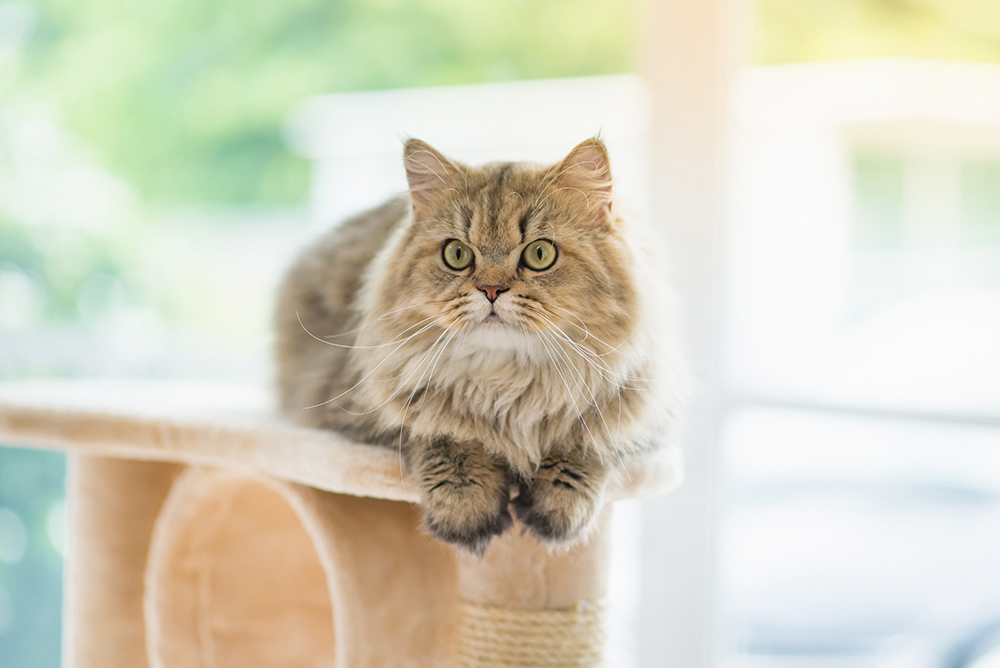Click to Skip Ahead
The gorgeous housecat can harbor so many different colors, patterns, and textures when it comes to their fur. Certain coat types can cause some confusion because they look remarkably similar. There are a total of six coat variations: tabby, solid, tortoise, colorpoint, tricolor, and bicolor.
Tortoiseshells and calicos are the creative mixes of color we see in felines, but which is which? Is there a difference? Absolutely. So, what exactly separates these two color patterns that allow you to tell them apart every time? Let’s assess the Calico vs Tortie and find out.

Calico vs. Tortie: Visual Differences
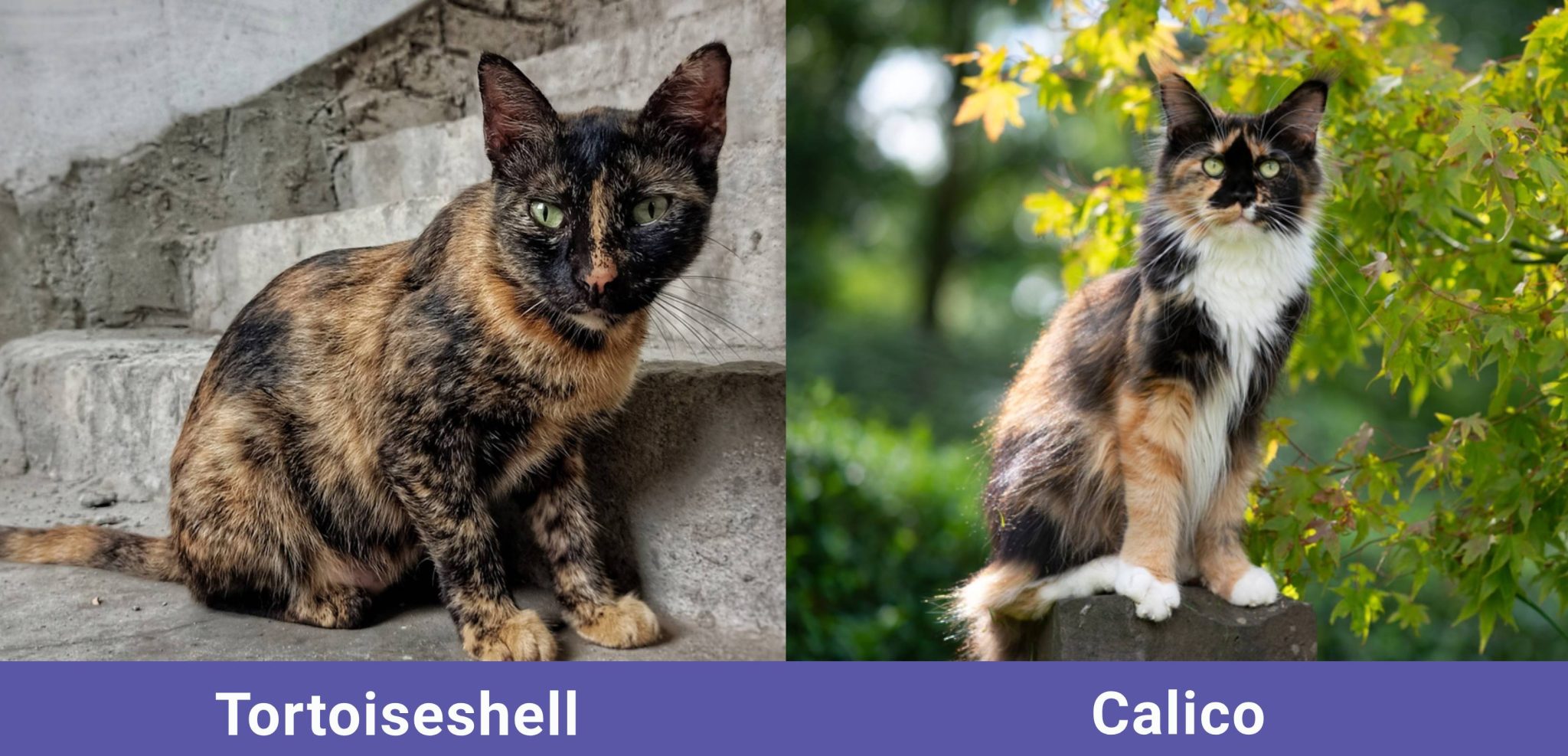
Here is a chart to break down the facts between these two fur-tastic felines.
- Number of Colors: Two colors
- White Patches: Never has white patches
- Color: Darker color
- Female: 99.9% female
- Males: Males are always sterile
- Personality: Feisty, independent, strong-willed, “tortitude”
- Number of Colors: Three colors, always including white
- White Patches: 25% to 75% white
- Color: Lighter color
- Female: 99.9% female
- Males: Males are always sterile
- Personality: Gentle, sassy, sweet, affectionate, independent

Tortoiseshell Cat Overview
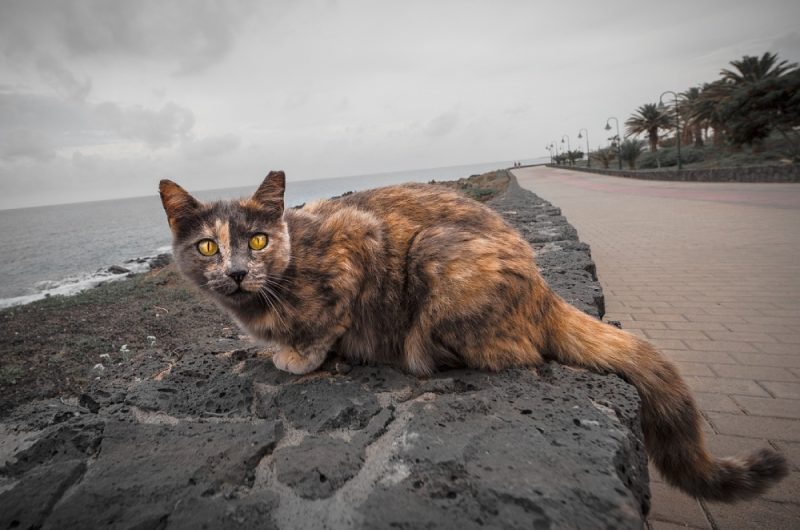
This is an introduction to the lovely, ever-sassy tortoiseshell—better known as “torties”. As you could guess, their name comes from their coat pattern, which looks quite similar to a tortoise’s shell.
The tortie harbors a lot of personality under their unique coat. These felines are known for their fiery, spicy attitudes, sporting a diva complex wherever they go—commonly referred to as “tortitude”. These creatures are independent—the epitome of a cat owning you rather than the reverse.
Torties are two shades of color, essentially any color from black to cream, but no white. They are instantly recognizable for their dark swirls and interesting patterns. Many torties have a “chimera-like” face, meaning two colors split nearly perfectly down the middle.
Torties are usually only female. Males are incredibly rare—and always sterile. That means you couldn’t use a male tortie in hopes of breeding them. And you may be able to strike a small fortune since male torties are considered a hot commodity—like a four-leaf clover.
Are you superstitious? In Celtic folklore, the tortoiseshell pattern is also attributed to luck. Still, today, when some spot a stray tortie, they believe great things will follow. So, next time you spot a tortie on your path, you may have a spell of good fortune. And if you own one, even better.

Calico Cat Overview
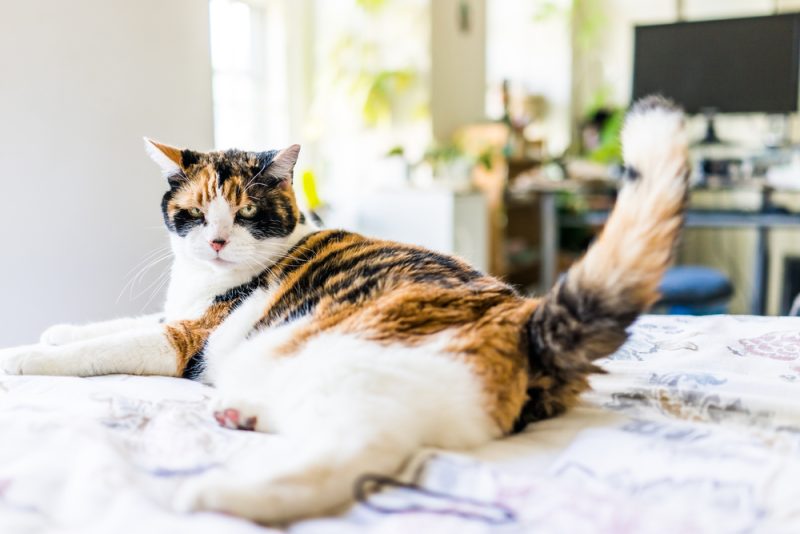
The beautiful calico is a tri-colored cat that always, always, always sports white in the mix. These cats have been the epicenter of scientific studies, trying to figure out what spontaneous genes combine to create this gorgeous feline.
When it comes to the personality you can expect, this varies more than other patterns. Usually, it goes one of two ways. A calico can share the attitude of a tortie—bold, independent, and mischievous. Or they can be very relaxed, gentle, and loving.
The calico has an exceptionally recognizable color palette. All calicos are 25–75% white. But they have patches of bold color that can be orange, black, tan, grey, chocolate, cream, red, or brown.
Rather than being bred for their particular coat pattern, the calico phenomenon is a spontaneous act of nature. This means you could not breed a calico cat with the hope of an all-calico litter. A calico can produce several colors on the kitty spectrum—there are no guarantees.
Calico is also not a breed—it’s just a pattern. That means many different cat breeds can have calico coats like Persians, Munchkins, and Maine Coons, but no cat is exclusively called “calico” by name.

Difference Between Tortoiseshell and Calico
You may think the tortie and the calico are essentially the same. After all, they are both a mixtape of different colors, resulting in a similar coat construction. But in reality, the coloring and the personalities vary quite a lot, and the separation is concrete.
The real key is the color white. That’s right—if you spot white patches, you’re dealing with a calico. If you see a mixture of darker colors—this is a tortie. Once you have this concept in mind, it will be easy to tell the difference from now on.

Tortoiseshell vs. Calico: Conclusion
So, even though the differences between the calico vs tortoiseshell patterns aren’t extreme, there is definitely plenty to set them apart from each other. Each coat color looks lovely on any cat breed out there. Even though it’s quite easy to mix it up, a simple variance like the color white can clear things up right away.
Keep an eye on kitty stereotypes. Are they right for your tortie or calico cat?
You might also like:
- Blue Tortoiseshell Cat: Interesting Facts (With Pictures)
- Lilac Tortoiseshell Cat: Facts, Origin & History (With Pictures)
Featured Image Credit: Left – Anna Krivitskaya, Shutterstock | Right – loicp90, Shutterstock

